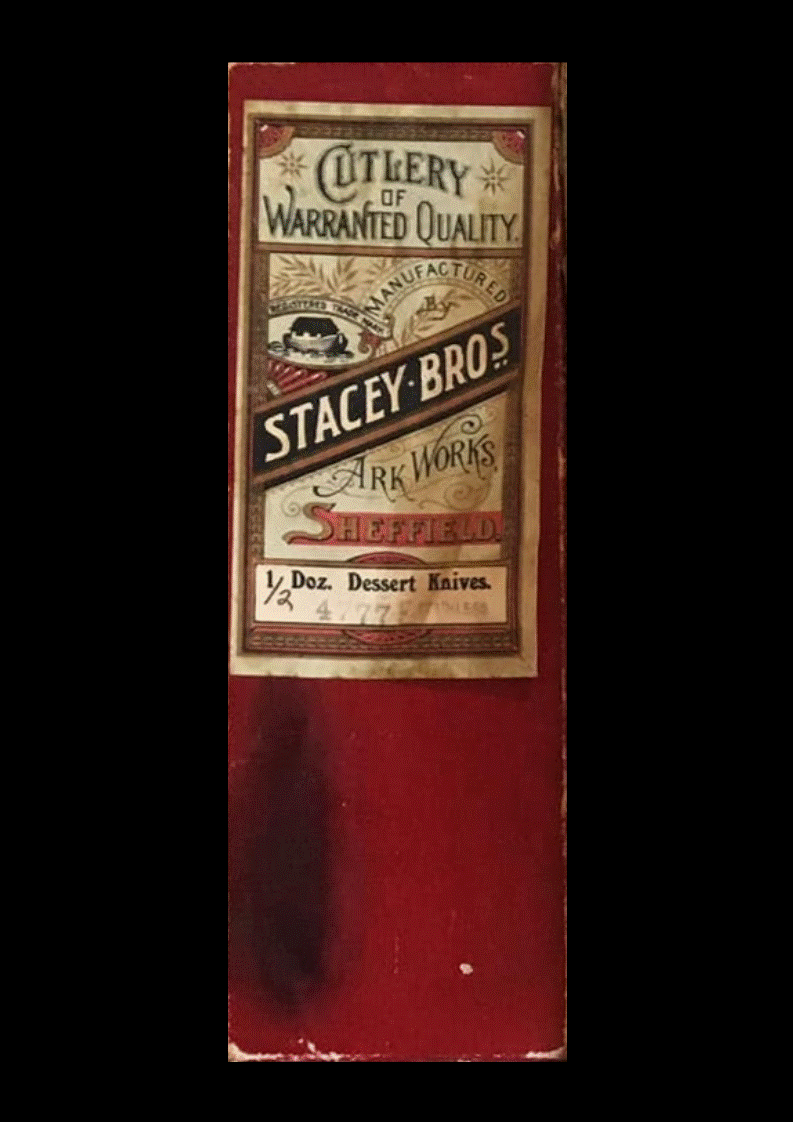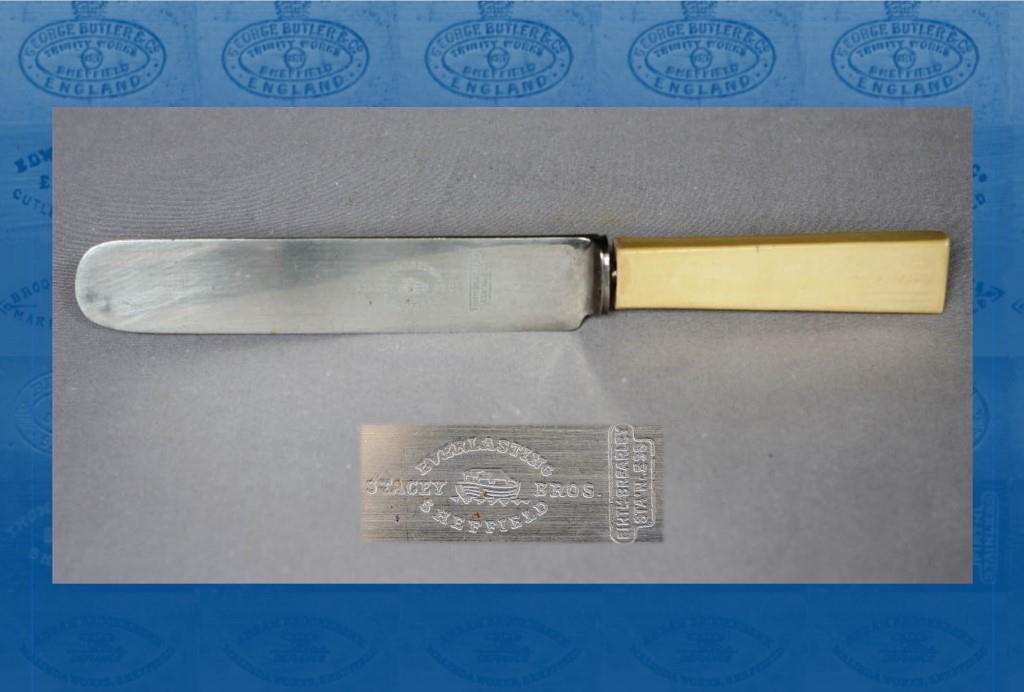
Stacey Brothers trade mark. Image courtesy of Geoff Tweedale



The name had echoes of Stacey Bros & Co, which was defunct by 1870. And there is no evidence that the firms were directly related. Stacey Bros was directed by Henry Vickers Stacey (1848-1912) and James Enoch Stacey (1860-1894). They were the sons of William Vickers Stacey (1818-1870), who was descended from well-known Britannia metal makers. Henry Vickers Stacey was enumerated in the Census (1881) at Hammond Street. He was a spring knife manufacturer, employing a dozen men, four boys, and a girl. His firm was not identified and no directory was published that year: but he may have been in partnership with Frederick Shaw (as Shaw & Stacey, Edward Street). That firm only operated for a year or two before its dissolution in 1882.
Stacey Bros was active by the mid-1880s. The Illustrated Sheffield List (1886) featured Stacey Bros at Rockingham Street, with an ‘ARK’ (picture) trademark, as ‘Manufacturers of every description of Table, Pocket, and Spring cutlery; Dirks, Bowie Knives, Razors, Scissors, etc.; and General Merchants’. In 1887, Stacey Bros at Rockingham Works, Rockingham Street, was dissolved as regards Henry V. Stacey (who had left to start a company in his own name).
James E. Stacey continued to run Stacey Bros at Ark Works, Rockingham Street. The firm also had workshops at Furnival Street and an office at Holborn in London. In 1890, Stacey Bros erected a three-storey block of workshops next to its original Works, but in the following year a fire broke out in the spring and table cutlery workshops on the upper storey. It completely gutted several workshops. The press reported that eighty to a hundred hands at Stacey’s would be thrown out of work (Sheffield Evening Telegraph, 24 February 1891). In the following year, James Enoch Stacey retired and passed the business to his co-partners, Charles Tidmarsh and Richard White (the latter of 127 Crookes Road). But a detailed prospectus appeared in The Sheffield Daily Telegraph, 1 July 1893, offering for sale the whole of the working plant, tools, and office fittings ‘Necessary for Carrying on a Cutlery Manufactory’. J. E. Stacey died on 22 June 1894, aged 33, leaving £893. His burial was at the General Cemetery.
The next owners of Stacey Bros were also brothers: Harold Wright (1867-1920) and Francis Wright (1870-1939). They were the sons of a Sheffield pawnbroker and had been trained as clerks. They opened a new Ark Works as cutlery and electro-plate manufacturers at Eldon Street. The partnership lasted until 1899, when Harold left, leaving his brother to continue the firm at Ark Works, Bishop Street. Harold died on 13 June 1920, leaving £3,585.
In 1913, Stacey Bros was acquired by Alfred Field & Co (Sheffield) Ltd, when the partners – Francis Wright and John Warren Hubbard – joined Field’s. Field’s used Ark Works for its offices, but Stacey Bros continued to operate as a stand-alone name. In 1919, its address was Ark Works, Trafalgar Street (the same as Field’s): but Stacey Bros had its own marks. Besides ‘THE ARK’, it used ‘SUPERB’ and ‘CUTWELL’ of John Coe & Co, ‘EVERLASTING’ of Thomas Turner, and the name of Thomas W. Ward & Co. The Hawley Collection has a stainless knife, which was probably made at the start of the 1920s, and had both ‘Ark’ and ‘Everlasting’ etchings. Thereafter, the history of Stacey Bros becomes more obscure. By 1925, its address was Clough Road, but by the end of the 1930s (after Field’s had closed) it was at Bramall Lane. Presumably, Francis Wright retained ownership of Stacey Bros. He died on 9 March 1939, leaving £3,710. Stacey Bros disappeared, though its trade marks were eventually owned by A. H. Bisby.





